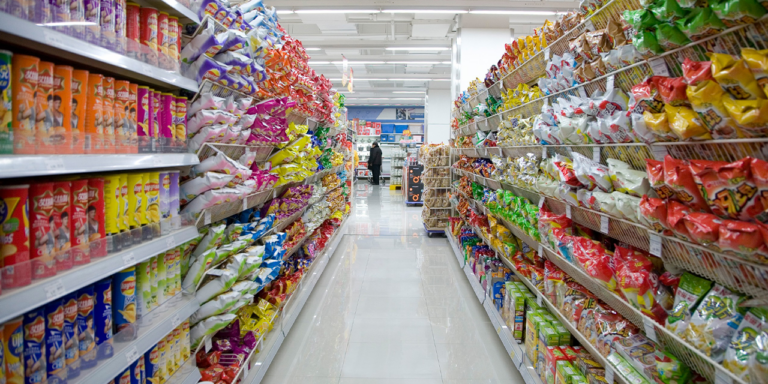Suppliers serve an impressive variety of retailers and wholesalers, so finding a consensus opinion on any given supply chain topic can prove tricky. But 87% of respondents in a recent RELEX survey of consumer goods suppliers did overwhelmingly agree on one thing: the wish for more collaboration with their retail partners.
Supplier collaboration provides essential visibility to both consumer goods companies and their retail and wholesale customers — visibility that leads to improved efficiency and reduced costs for all parties. Despite the desire to improve, the current state of collaboration leaves much to be desired. Important data remains siloed, meetings infrequent, and communication limited.
Yet the dream of better collaboration isn’t just a fantasy. Modern tech advancements have made it easier than ever to improve collaboration using a smart collaborative planning platform. Suppliers that do invest in the right software stand to gain a competitive advantage in an increasingly crowded market — and at a time when supply chain wins can be hard to come by.
Here are the three biggest obstacles impeding supplier collaboration — and how the right planning platform will help you to overcome them.
The 3-pronged supplier collaboration challenge: Not enough data, not enough staff, and not enough communication
Every supplier has their own unique roadblocks hindering better collaboration, and so does each of their customers. But the biggest obstructions to improved collaboration boil down to three issues: data headaches, labor costs, and a breakdown in communication.
Data headaches
The 2023 RELEX Supply Chain Collaboration Report reveals that 78% of surveyed suppliers receive data from their retail and wholesale partners. Yet many pointed out various issues surrounding data collection, especially concerning:
- Data quality issues
- Limited data volume
- A lack of a regular data sharing cadence
Suppliers and their customers don’t always use compatible tool stacks, rendering the data one organization shares unusable to the other. And readable data is often expired or in too small a volume to be useful for suppliers.
Consumer goods suppliers also find themselves sifting manually through reams of data, only to find that what they received from customers wasn’t what they were looking for. The data most relevant to suppliers includes:
- Sales forecasts
- Sales volumes
- Promotions data
- Inventory data
Data headaches are only made worse by suppliers themselves. Many suppliers complicate data sharing within their own organizations. Useful customer data that does make it through is often siloed, remaining hard to access to much of the broader organization. Only 26% of suppliers believe the data customers share is easily accessible to everyone within the company.
Labor issues
Current collaborative processes remain highly manual, requiring suppliers to create teams dedicated to customer communication. While these teams should theoretically enhance collaboration between organizations, workers instead often find their time consumed with more tedious tasks —chasing, collecting, analyzing, and even reformatting customer data. The team also wrangles the internal data they send to customers, leaving little time to plan or work toward process improvements.
The communication these teams provide to suppliers provides immense value. But consumer goods suppliers are highly cost-conscious amidst ongoing supply chain disruptions — and so are their wholesale and retail customers. Suppliers or their customers may find it difficult to invest in or expand their workforce specifically to improve supplier collaboration despite potential future cost savings. This is especially true with companies across the globe struggling to hire, train, and retain their workforce.
Communication breakdown
The establishment of a regular cadence of communication can be difficult for everyone in the current topsy-turvy supply chain climate. Many organizations find themselves unable to plan as proactively as they’d like because they are stuck perpetually reacting to adversity. This can lead to a vicious cycle of diminished communication:
- A retailer becomes too busy to collaborate with a supplier…
- …which results in inaccurate demand forecasts for the supplier…
- …which leads to supply shortages…
- …causing the retailer to become too busy to collaborate with a supplier.
Retailers and wholesalers don’t like surprises. Breakdowns in communication injure the trust between suppliers and their customers and can limit their willingness to collaborate. This can make it difficult for suppliers to achieve their strategic goals despite often sharing those goals with their customers.
3 ways to cure retailer and supplier collaboration woes using a collaborative planning platform
One look at the issues preventing enhanced collaboration and it’s easy to understand why suppliers have struggled to make meaningful improvements to their processes. Internal data, labor, and communications issues are often hard to get a handle on internally, and the complexity only compounds when working suppliers factor customers into the equation.
But complex collaborative roadblocks don’t necessarily require complex solutions. Alexander the Great famously “untied” the impossible Gordian Knot by simply slicing through it with his sword. The key to overcoming the seemingly impossible puzzle of supplier communication is also deceptively simple: the adoption of a collaborative planning platform.
The right collaborative planning platform allows supplier and their customers to:
Share better data more often with automation
Collaborative planning platforms address data collection and management issues in a single elegant way: automation. These tools allow suppliers and their customers the ability to automatically upload up-to-date data into the collaborative system for use by both parties. Data from various sources are unified within the platform and then “transformed” into a format that can be used in planning for both short- and long-term planning horizons.
Planning platforms allow collaborators to share a wide variety of data sets, including:
- Forecasts
- Points of sale data
- Order plans
- Promotions
- Assortment changes
- Lead times
- Shipment schedules
Automated sharing also addresses another critical issue facing wholesalers: labor costs. Suppliers who automate their data sharing using a planning platform free up their staff to perform value-adding tasks that can’t be done by computers, like proactively clarifying and communicating exceptions to collaborative partners.
Use actionable insights
All that automated data sharing isn’t just for show. This data grants suppliers greater visibility into customer and consumer demand, allowing them to take action ahead of potential supply and demand imbalances.
Collaborative planning platforms allow suppliers to use demand sensing tactics to make necessary short-term forecast adjustments. Traditional forecasting involves using internal data like historical and reorder information to create forecasts. But these forecasts don’t account for immediate demand changes caused by events like social media events or customer promotions. Demand sensing combines traditional data sets with customer data to allow planning platforms to better detect these sudden demand shifts and then automatically adjust forecasts accordingly.
Planning platforms capable of demand sensing help suppliers identify misalignments between expected supply levels and forecasted demand. The platform may detect increased demand for a product affected negatively by a material shortage. Quick detection using up-to-date customer data could give the supplier enough time to increase production of a similar product as an acceptable substitution while the shortage persists.
Strengthen supplier & retailer communication to align on strategy
Suppliers and their retail and wholesale customers share similar goals like reduced costs, fewer disruptions, and increased sales, so working together to achieve those goals benefits everyone involved. The best planning platforms come equipped with collaborative dashboards that grant collaborators greater visibility into potential issues so that disruptions can be dealt with proactively.
A planning platform enables companies to align strategies in several essential ways:
- Simultaneous viewing of the same up-to-date data. Planners from suppliers and their customers alike can highlight potential bottlenecks and collaborate quickly on a solution using the platform itself instead of sending emails back and forth.
- Communication of future events. Visibility into a customer’s upcoming promotions enables suppliers to increase production for a particular good in anticipation of an expected increase in future demand.
- Shaping demand. Suppliers and their customers can collaborate together on trade promotions, pricing changes, and more to influence consumer demand in a way that better matches their existing supply.
These capabilities streamline the collaborative process for suppliers and their collaborators, minimizing the risk of costly communications and reducing an often frustrating process into something far more painless.
Win more, together
Relationships between suppliers and retailers have certainly come with a fair amount of frustration on both sides, which could easily dissuade each party from working toward improvements. But an investment in regular collaborative communication and the right technology to collect and share data can work wonders to smooth the way forward.
Success ultimately depends upon the trust built when both parties have a clear understanding of how their plans will impact one another. When retailers and suppliers combine advanced technology with open communication, they can work together — and win together — to achieve the best outcome for the consumer.
This is the final article in a series of four focused on helping consumer goods companies navigate the market shifts we’re currently seeing across the globe. The other articles include:
3 fundamentals to maintaining control of demand in the consumer goods supply chain
How demand sensing helps conquer FMCG supply chain chaos
Transform consumer goods S&OP with next-level demand shaping






